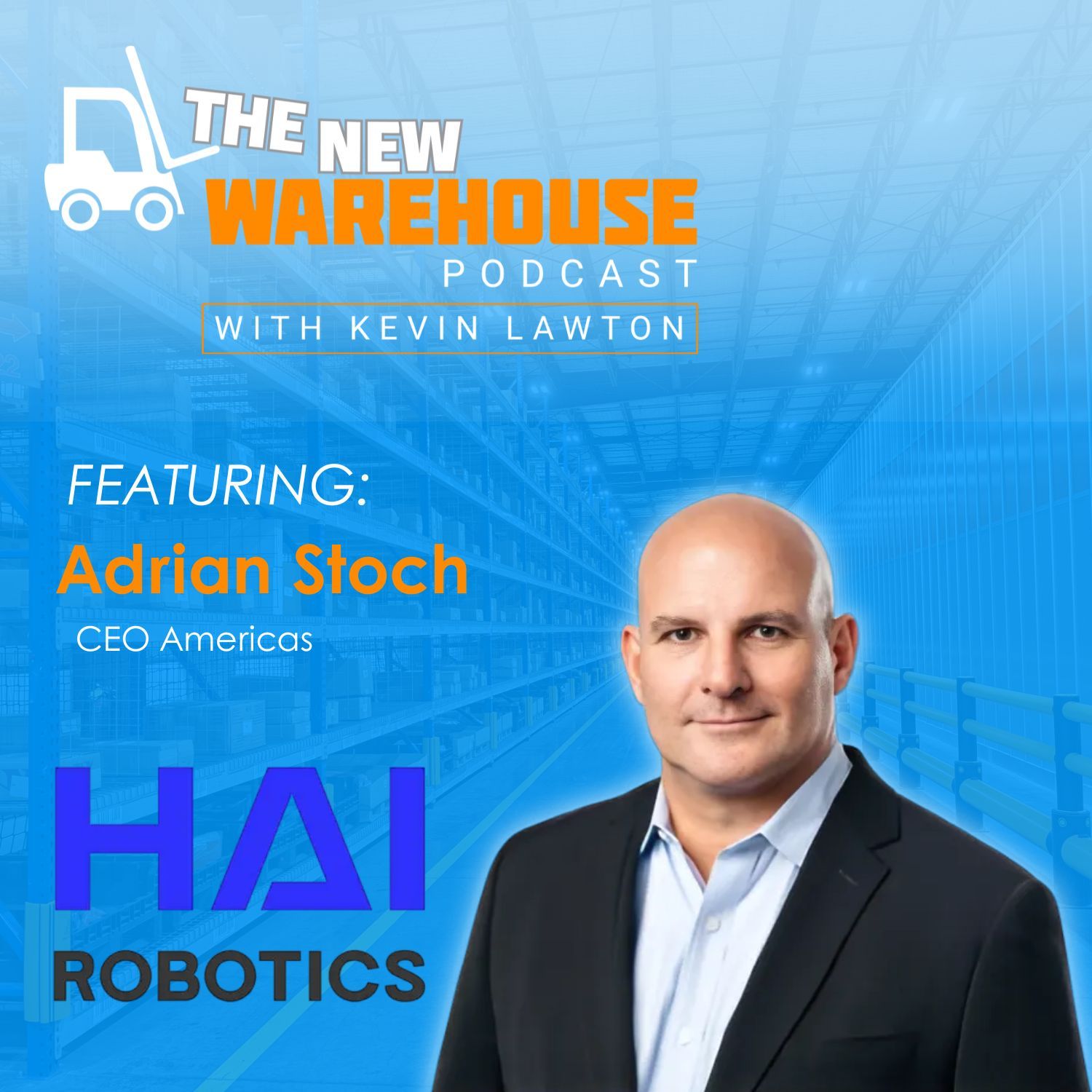
631: Customer-Centric Automation with Adrian Stoch of Hai Robotics
In this episode of The New Warehouse Podcast, Kevin chats with Adrian Stoch, CEO of the Americas at Hai Robotics. Adrian recently transitioned from the end-user side, with leadership roles at GXO and Target, to the solution-provider side at Hai. His unique perspective brings a sharper focus on customer success in warehouse automation. Adrian shares why he joined Hai Robotics, how his past experiences shaped his views on automation, and why customer outcomes must drive innovation.
Adrian also dives into adoption challenges, the rise of humanoids, and how Hai Robotics is rethinking automation excellence. From large-scale implementations to small and mid-market companies exploring robotics, Adrian highlights why true innovation isn’t just about robots.
From End User to Solution Provider at Hai Robotics
Adrian’s career includes a decade on the customer side of automation at Target and GXO. Those experiences shaped his frustration with vendors who prioritized technology over customer outcomes. As he explained, “All that focus was put into the steps of the creation of the product and so little, so little into the end customer experience.” That dissatisfaction made Hai Robotics stand out when its founder emphasized customer obsession over tech-first thinking.
Adrian shared how GXO often rescued companies from failed automation attempts, with firms coming to them “in a kind of an exasperated situation.” For him, Hai Robotics’ approach—starting with customer success workshops and aligning on outcome metrics—was a differentiator. “That step that I’ve just described is not; it doesn’t exist in the automation industry,” he noted. His decision to join Hai reflects his mission to bridge this gap and redefine what automation excellence should mean.
How Hai Robotics is Redefining Automation Excellence
In his new role, Adrian champions what he calls “automation excellence.” Unlike operational or sales excellence, this discipline remains undefined. “Automation excellence isn’t well defined yet. And this is what I intend to fix,” he stated. The key isn’t more innovation but better adoption. Too many providers stop at contractual success metrics—such as whether robots are moving—while neglecting to determine whether customers achieve their desired business outcomes.
At Hai, Adrian is embedding continuous improvement into every project to ensure automation success translates into real operational benefits. He emphasized that adoption challenges hinder the industry more than technological limitations. Labor challenges, supply chain disruptions, and rising costs are forcing companies toward automation, but poor deployments erode trust. By prioritizing customer success, Hai Robotics aims to make automation more reliable, scalable, and valuable across various market segments.
The Future: Humanoids, Labor, and Innovation
Adrian predicts that humanoid robots will become commercially viable within the next year, initially in non-collaborative roles. “It’s only a matter of time, and I don’t believe that time in this instance means five years. I think it means a year or so,” he said. Still, the near-term challenge is ensuring safe integration with humans. Beyond humanoids, he emphasized that automation complements human labor rather than replaces it.
“The kinds of jobs that automation augments or replaces are the kind of jobs that aren’t really that desirable,” he explained, pointing to heavy lifting and repetitive trailer work. With aging workforces and existential labor shortages, automation is shifting from a focus on ROI to one of survival. Looking ahead, Hai Robotics plans to expand integrated process flows beyond picking to include containerization and end-to-end workflows. For Adrian, the ultimate goal is customer trust: “Yes, the robots are great, but those smiles and that trust, that’s what we’re really looking to get with our customers.”
Key Takeaways from Hai Robotics
- Successful automation must prioritize customer outcomes, not just technology.
- Labor shortages and aging workforces are making automation an existential necessity.
- Humanoid robots could reach commercialization in as little as a year, beginning with non-collaborative use cases.
- Hai Robotics is focusing on integrated, end-to-end workflows that align automation with customer success.
Listen to the episode below and leave your thoughts in the comments.
Guest Information
For more information on Hai Robotics, click here.
To connect with Adrian Stoch on LinkedIn, click here.
For more solutions like Hai Robotics, check out the podcasts below.
To Bot or Not: Lessons on Robotics from WERC 2025
626: Anscer Robotics Expands with Heavy-Duty Hybrid Solutions
624: Bringing Robotics to the Warehouse Floor with Boston Dynamics

Warehouse Trends October 2025: The New Warehouse
[…] Stoch of Hai Robotics believes humanoid robots are closer than most realize. “It’s only a matter of time, and I […]